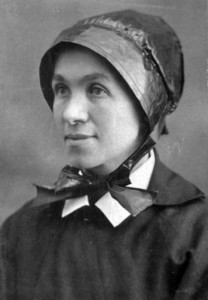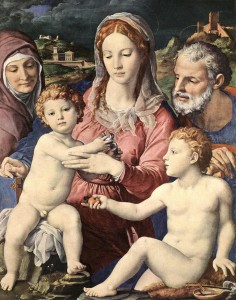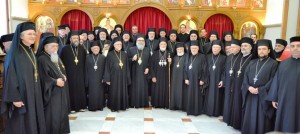Lots of talk these days on those proposed for sainthood: Abp. Fulton Sheen, Msgr. Bernard J. Quinn, Sr. Bladina Segale, and of course, Michael J. McGivney (1852-90). As you know the New Haven, CT, native is revered now as the Venerable Servant of God, was a parish priest at St Mary’s Church (New Haven) in what is now the Archdiocese of Hartford and the founder of the Knights of Columbus. McGivney died early of TB.
Carl Albert Anderson the supreme knight of the KofC is in Rome this week for the ceremony which will impose the pallium upon the archbishop of Hartford Leonard Paul Blair by Pope Francis, and other meetings. One of the events was the June 25th presentation of the Italian edition of Parish Priest by Douglas Brinkley Julie M. Fenster. It was held at the Augustinianum, the school devoted to patristic study and steps from St Peter’s. Along with Anderson (remarks here) the book launch was presided over by Kevin Coyne from Columbia University’s School of Journalism and Father Giuseppe Costa, director of the Vatican Publishing House, which is publishing the book. More about the Rome event is here.
The synthesis makes the connection that McGivney was ahead of the times with his social awareness for the dignity of the human person, the poor and the family viz. the Gospel and Tradition, with what became the Church’s social doctrine articulated with the publication Rerum Novarum by Pope Leo XIII.
Hence, the argument is that the Knights of Columbus with its emphasis on charity and fraternity set the stage for greater and wholistic engagement in society in the post-industrial era and prompted by lay men and not the clergy that cared for the person as imago Dei and the encounter with Christ.
Domenico Agasso’s piece for the Vatican Insider, “McGivney prepared the Knights of Columbus to help Popes“






